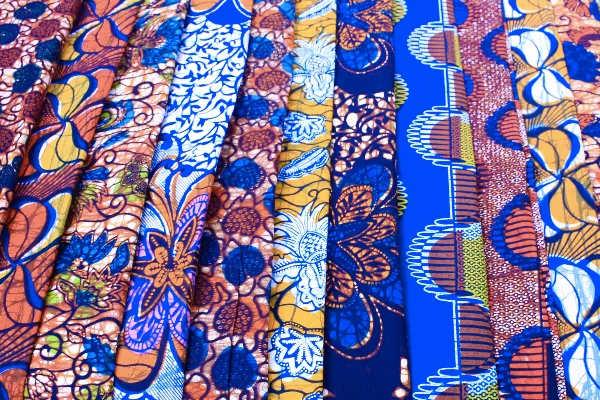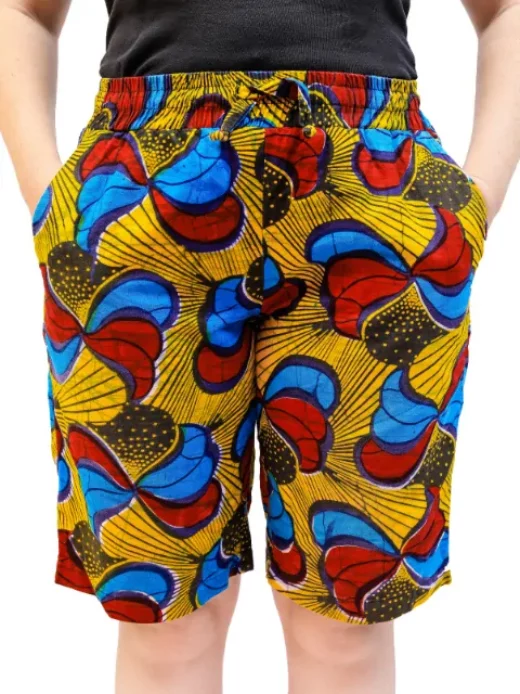In African fashion, one fabric stands out as a timeless symbol of cultural heritage, vibrant aesthetics, and artistic expression: Kitenge cloth. Bursting with colors, patterns, and stories, Kitenge has long been cherished as a versatile textile embodying Africa's rich cultural tapestry. In this article, we delve into the origins, significance, and evolving role of Kitenge cloth in African fashion, celebrating its journey from traditional attire to a global style statement.
Batik's Evolution into Kitenge Fashion
Batik, originating from Indonesia, is a wax print fabric where wax is applied to the cloth before dyeing. The wax acts as a barrier, preserving the fabric beneath and creating vibrant patterns during dyeing. During the Dutch colonization of Indonesia, merchants learned about the Batik print and tried to make it popular back home using their imitation methods. It wasn't a flop, but wasn't quite the success they hoped for.
Cultural Significance
Kitenge cloth offers diverse patterns, incorporating geometric shapes, nature-inspired designs, and intricate symbols with profound cultural significance. Beyond its aesthetic charm, Kitenge becomes a canvas of symbolism, expressing its wearers' beliefs, traditions, and affiliations. Each pattern carries a narrative, conveying social status, marital status, spiritual beliefs, or regional connections. Kitenge fabric is a testament to a rich cultural tapestry woven into every thread.
Wearing Kitenge celebrates cultural heritage, fostering pride and connection as individuals share narratives passed down through generations. The fabric's versatility allows for various garment creations and home decor items, enabling individuals to infuse their style and creativity. Embraced in numerous African countries, including Kenya, Uganda, Tanzania, Sudan, Nigeria, Cameroon, Ghana, Senegal, Liberia, Rwanda, and the Democratic Republic of the Congo, Kitenge holds cultural significance. In specific regions like Malawi, Namibia, and parts of Zambia, it goes by names like chitenje or chitenge. Traditionally worn in warm weather, Kitenge has gained popularity among men in Malawi, encouraged by a presidential initiative promoting local products.
Fusion of Tradition and Modernity in African Fashion
Beyond traditional uses, kitenge fabric finds its way into modern fashion, with individuals incorporating it into clothing items and accessories. This infusion of tradition into contemporary styles allows the youth of Africa to create a unique fusion that resonates with their identity. Additionally, kitenges transcend their practical applications, transforming into framed batik artwork, adding a touch of African aesthetics to living spaces. Celebrating craftsmanship and intricate designs, kitenges become visually stunning pieces that bridge tradition and modernity.
In recent years, Kitenge cloth has transcended its traditional roots and become a prominent feature in contemporary African fashion. Fashion designers and enthusiasts across the globe have embraced this vibrant fabric, incorporating it into their collections and runway shows. The versatility of Kitenge cloth allows for fusion with modern styles, resulting in unique and eclectic designs that blend African aesthetics with global trends.
Furthermore, the rise of social media and e-commerce platforms has facilitated the accessibility and visibility of Kitenge cloth, enabling designers and artisans to reach a wider audience. Many African fashion brands and independent designers now showcase Kitenge-inspired clothing lines, helping preserve traditional craftsmanship while embracing innovation.
Kitenge cloth is more than a fashion trend; it embodies the essence of African diversity and empowerment. Wearing Kitenge represents a celebration of cultural heritage, support for local artisans and industries, and a challenge to conventional beauty standards. This fabric is a powerful symbol of self-expression, fostering inclusivity and pride in one's roots. Beyond its vibrant colors and intricate patterns, Kitenge holds cultural stories, weaving together history, identity, and artistic expression, bridging tradition and modernity. As Kitenge continues to captivate the fashion world, it becomes a thriving symbol of African fashion, celebrating the continent's rich cultural tapestry while making a global impact.
The cloth does not make the person, but it reveals their character. - La Djalobienne Eton
References:
















No comments:
Post a Comment